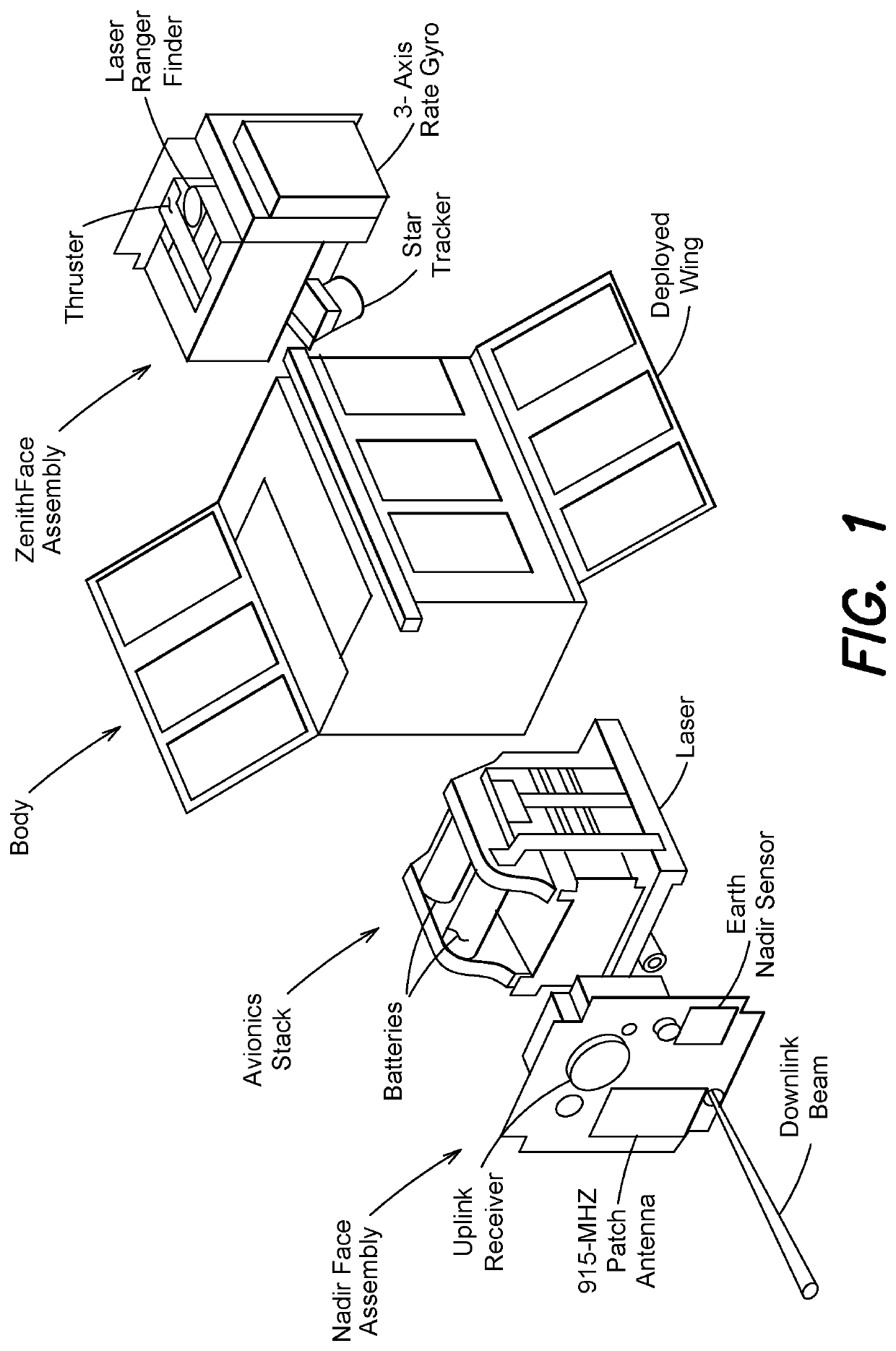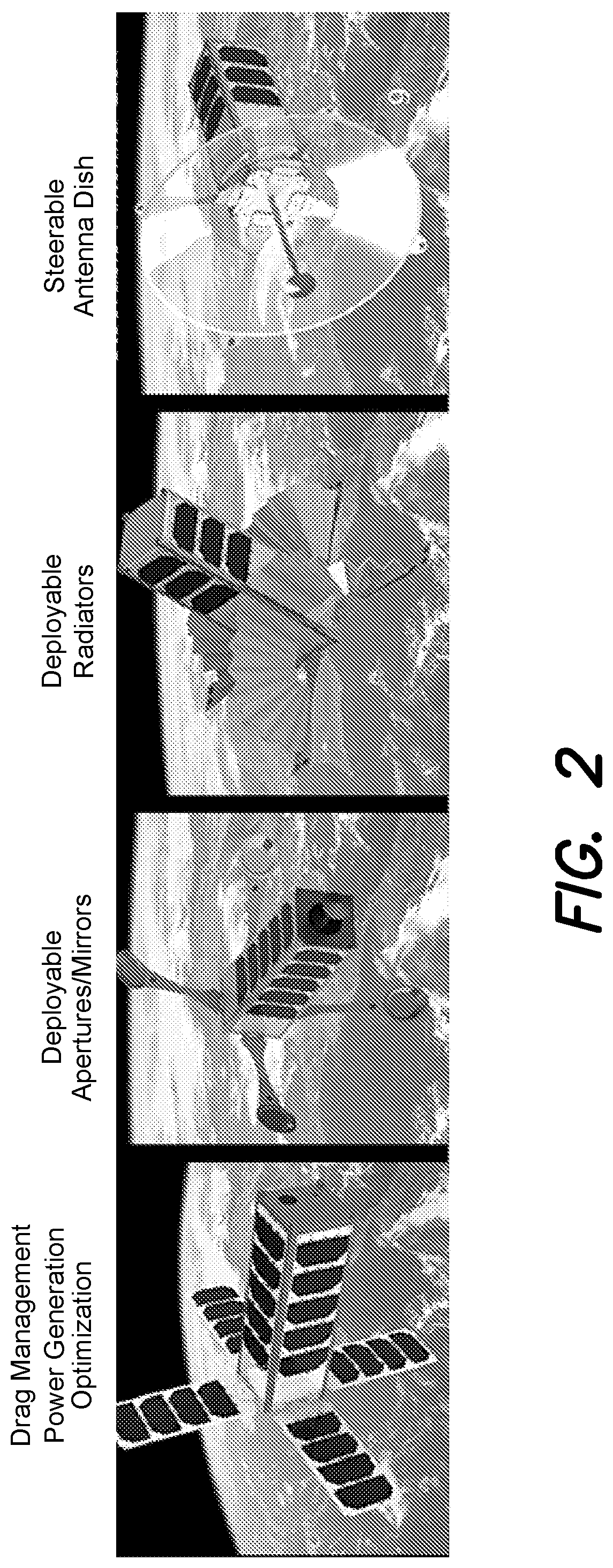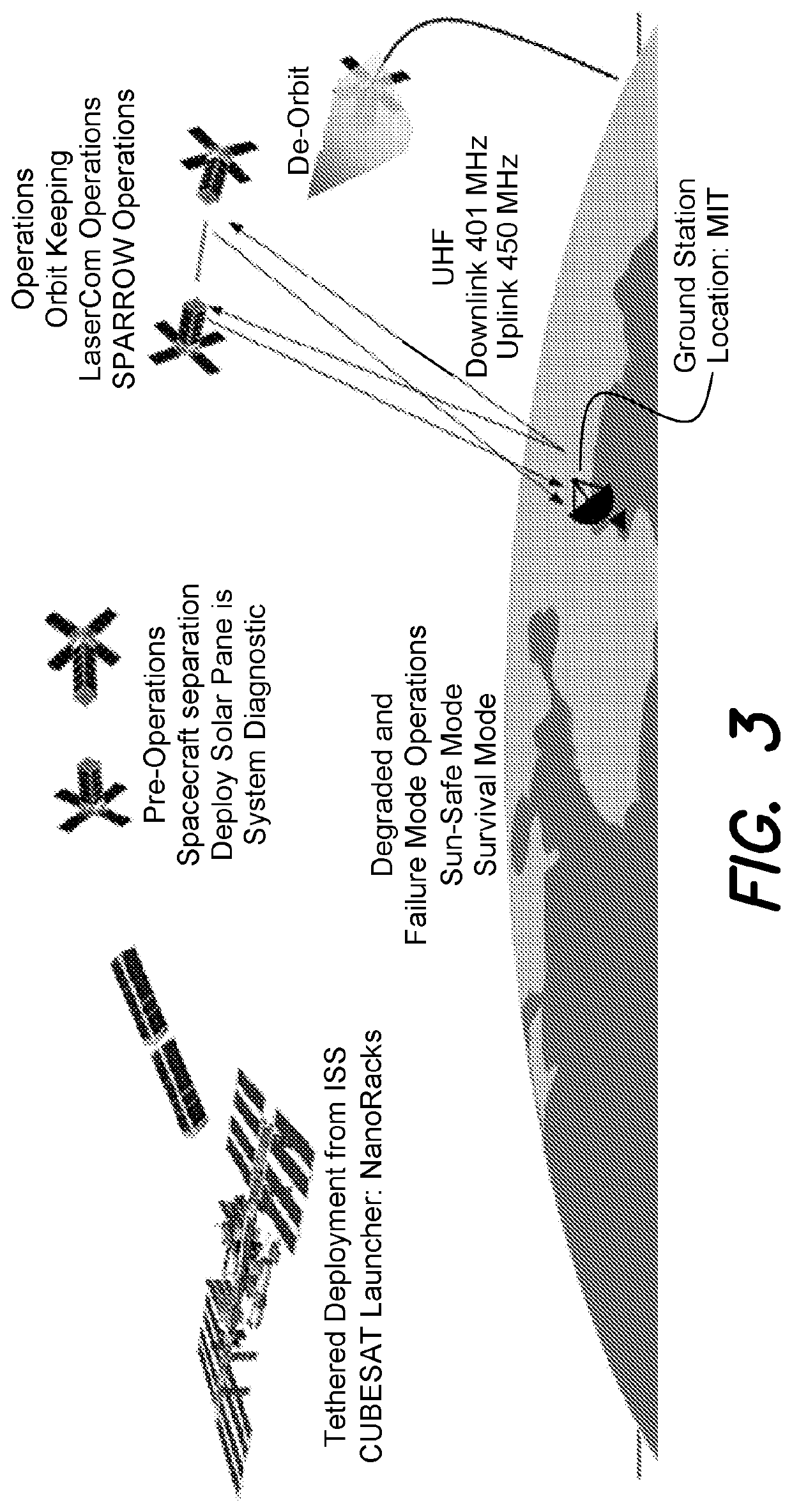Shape memory alloy (SMA) hinge apparatus, and systems and methods employing same
a memory alloy and hinge technology, applied in the direction of cosmonautic vehicles, wing accessories, machines/engines, etc., can solve the problem of limiting the ability of multi-use actuators to support, and achieve the effect of reconfigurable deployable structures and increased power generation
- Summary
- Abstract
- Description
- Claims
- Application Information
AI Technical Summary
Benefits of technology
Problems solved by technology
Method used
Image
Examples
Embodiment Construction
[0081]Following below are more detailed descriptions of various concepts related to, and embodiments of, inventive shape memory alloy (SMA) hinge apparatus, and systems and methods relating to same. It should be appreciated that various concepts introduced above and discussed in greater detail below may be implemented in any of numerous ways, as the disclosed concepts are not limited to any particular manner of implementation. Examples of specific implementations and applications are provided primarily for illustrative purposes.
[0082]Spacecraft Context for Inventive SMA Actuator / Hinge Apparatus
[0083]CubeSats are a class of miniaturized satellites configured to provide capabilities, such as remote sensing or communication, that can augment, or in some instances, replace the capabilities provided by larger satellites. An exemplary CubeSat is shown in FIG. 1. The size and weight of CubeSats are standardized in multiples of 1U, where 1U corresponds to a 10 by 10 by 10 cm3 cubic volume a...
PUM
 Login to View More
Login to View More Abstract
Description
Claims
Application Information
 Login to View More
Login to View More - R&D
- Intellectual Property
- Life Sciences
- Materials
- Tech Scout
- Unparalleled Data Quality
- Higher Quality Content
- 60% Fewer Hallucinations
Browse by: Latest US Patents, China's latest patents, Technical Efficacy Thesaurus, Application Domain, Technology Topic, Popular Technical Reports.
© 2025 PatSnap. All rights reserved.Legal|Privacy policy|Modern Slavery Act Transparency Statement|Sitemap|About US| Contact US: help@patsnap.com



